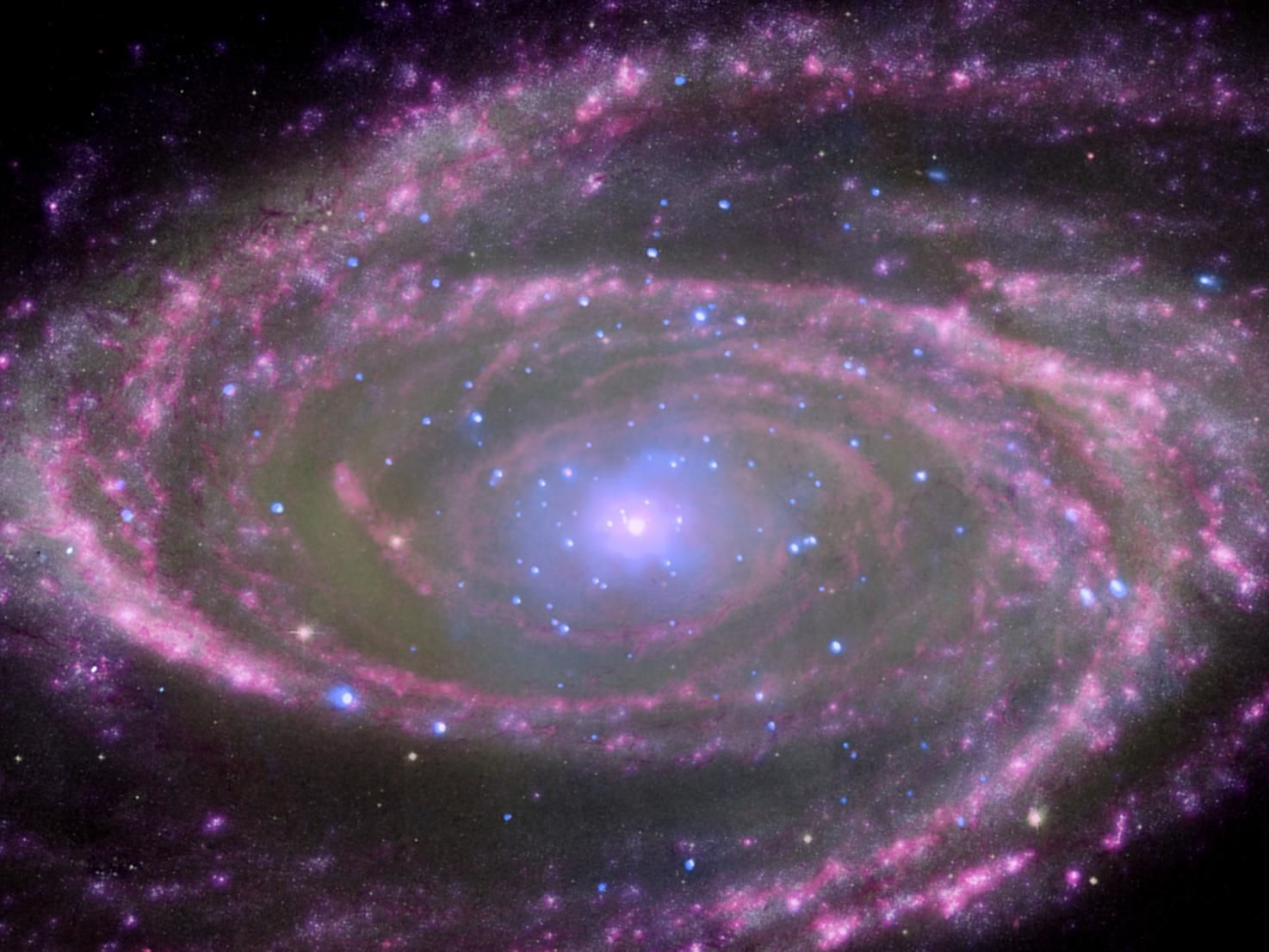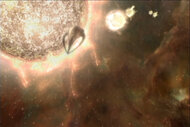Create a free profile to get unlimited access to exclusive videos, sweepstakes, and more!
Black holes might not crush you after all—they could be even weirder than that

Just when you thought one of the most bizarre things in space was something that eats massive amounts of light and energy and would probably shred you with its gravitational forces, what if it was something even harder to imagine?
Black holes are supposed to have a singularity—a point that is so small and dense we can’t even fathom it—in the middle of all that swirling light and gas. But what if at least some cosmic phenomena that look like black holes are actually cosmic objects full of dark energy? That is what astrophysicists Kevin Croker and Joel Weiner of the University of Hawai’i at Manoa recently published in a study in The Astrophysical Journal that tries to prove these hypothetical Generic Objects of Dark Energy (GEODEs) exist.
If GEODEs really do exist, with dark energy (which we still don’t completely understand) throwing things everywhere and randomly ripping them apart, it could mean that the rapid expansion of our universe is a result of how mass and energy warp spacetime according to Einstein’s theory of general relativity.
“It is now clear that general relativity can observably connect collapsed stars … to the behavior of the universe as a whole, over a thousand billion billion times larger,” Croker said.
Physicists usually use Friedmann’s equations, which simplify general relativity, to describe how the universe expands. What Croker and Weiner realized was that extreme objects in space, such as black holes and neutron stars, had to mathematically be treated the same way as anywhere and anything else in space. Previously, cosmologists would gloss over anything that delved too deeply into these phenomena. That was evidently a mistake. There is only one correct way to pull off these equations, as Croker and Weiner found.
What the duo revealed was something huge—literally and otherwise. GEODEs (again, assuming they exist) could easily contain all the dark energy the universe needs to keep expanding at the rate it is. Another thing Friedmann’s equations brought to light was that the expansion of the universe makes normal matter lose weight but actually causes anything relativistic, or ultradense with immense amounts of pressure inside, to gain weight. The pressure in these objects behaves like the total opposite of matter and light. Dark energy is highly relativistic.
GEODEs may even explain some strange things caught by gravitational wave observations in 2016. While more investigation needs to be done, this could have us seeing black holes an entirely different way, even if we can’t actually see them.














